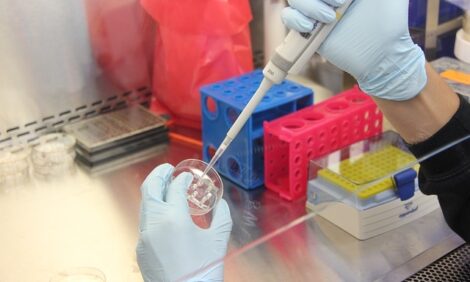



A Satellite to Feed the World?
US - It is ironic that just when Earth-monitoring satellites are needed more than ever to address the food and freshwater demands of a burgeoning global human population, we face an impending gap in coverage by the Landsat programme, writes Charles L. Walthall, ARS National Program Leader for Climate Change, Soils and Emissions in Beltsville, Maryland.A series of Landsat satellites has been continuously in orbit since 1972, collecting an invaluable time sequence of global imagery that records decades of land-use and land-cover changes. The recent decision by the US Geological Survey (USGS) to provide Landsat imagery free of charge has led to an explosion in applications, enabling unprecedented study of global deforestation, changes in cropping systems and irrigation practices, and conversion of land from its natural state to managed or urban use.
Addition of a thermal infrared channel to the Landsat series in 1982, with Landsat 4, enabled monitoring of not just land use but also water use. Evaporation of water from the soil and transpiration by plants cool the land surface and generate a detectable thermal signal. Using thermal band satellite imagery, scientists have developed techniques for mapping evapotranspiration that are used throughout the world to monitor consumptive water use by irrigated and rain-fed crops. The collective archive of Landsat thermal data provides a nearly 30-year record of global water-use patterns, with enough detail to resolve individual agricultural fields.
Today, the continuity of this valuable historical record is under threat. At present, only Landsat 7 is still collecting data, but at degraded capacity due to a component failure in 2003. (Landsat 5 data collection was suspended on November 18, 2011, after a remarkable 27 years of operation.) Landsat 8 is scheduled for launch by the National Aeronautics and Space Administration (NASA) no earlier than January, 2013. Thus, much of the 2012 growing season will have limited coverage by Landsat imagery, a first since the early 1970s.
Support for continuing thermal imaging capabilities within the Landsat program has also been tenuous. As a cost-saving measure, a thermal sensor was initially omitted from the original Landsat 8 mission scope. An outcry from water managers and governors in the western states, who rely on Landsat thermal imagery for operational water management efforts, persuaded Congress to request that NASA add the Thermal InfraRed Sensor (TIRS) to the Landsat 8 instrument suite already under construction. However, due to time constraints related to the late addition, TIRS has a more limited design life and less internal component redundancy than previous thermal Landsat sensors have had.
Landsat’s thermal and optical sensors provide invaluable high-resolution (30 to 120 meters) information for monitoring global production of food and fiber, crop health, available soil moisture, and early warning of drought. Many of these applications are summarized in the story on page 4, describing the research of Agricultural Research Service scientists Martha Anderson and Bill Kustas. But the temporal coverage provided by a single Landsat system—one snapshot every 16 days or longer, depending on cloud cover – is inadequate to meet the real-time needs of agricultural monitoring. Future agricultural satellite systems would ideally provide 1- to 4-day revisit intervals, achieved either by widening the swath of the imaging instruments or flying multiple platforms in staggered orbits.
Global interest in satellite-based crop and water-use mapping has exploded in recent years as demand for food and fresh water expands and increased climate variability imposes new challenges to agricultural communities worldwide. With crop and water-use information at sufficiently high resolution and with dependable, satellite-derived flood/drought early-warning products, the climate resilience of these communities may be significantly improved. Timely information of this type may have enabled earlier and better-targeted mobilization of relief efforts as the 2011 famine unfolded in the Horn of Africa. Satellites are vital to our pursuit of new ways to use science and technology to improve agricultural productivity to feed the world, the core mission of the U.S. Department of Agriculture.
Beyond Landsat 8, the future of the Landsat program and operational land imaging under the auspices of the USGS is uncertain. Initiation of satellite development during fiscal year 2012 appears doubtful, and thus we may not be able to launch the next satellite until sometime after the design life of Landsat 8 expires. We risk yet another gap in Landsat coverage.
The well-being of nations greatly depends on their having ample food and fresh water for the general population. The cost of satellites, their launches, and sensor development is high, but that has to be balanced against the global low-cost data they provide for years once in orbit – and against the value of their role in protecting the world’s food and water supply.








